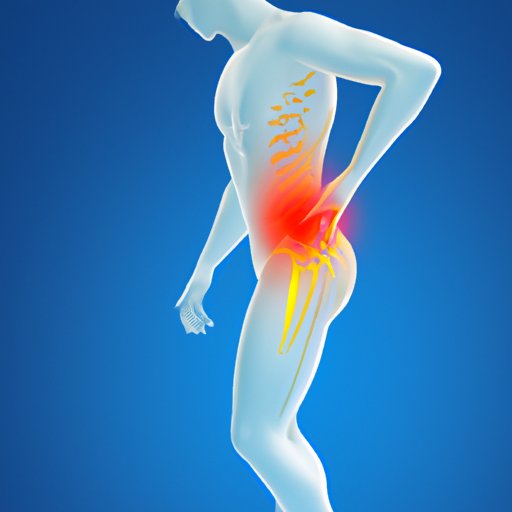
Introduction
The tailbone, also known as the coccyx, is located at the bottom of the spine and consists of several fused bone segments. It serves as an attachment point for muscles, ligaments, and tendons. A broken tailbone can result from a direct blow, such as a fall onto a hard surface, or prolonged pressure on the area. In this article, we will explore the symptoms of a broken tailbone, how it is diagnosed, remedies for pain relief and healing, recovery time, and prevention strategies.
Symptoms of a Broken Tailbone
The most common symptom of a broken tailbone is pain and tenderness in the area. This pain can be severe, particularly when sitting or moving. You may also experience difficulty walking or standing, as putting pressure on the affected area can be painful. Bruising and swelling in the tailbone area may be present as well.
Diagnosing a Broken Tailbone and When to Seek Medical Attention
If you suspect that you have a broken tailbone, it is important to seek medical attention. A doctor will perform a physical examination to assess the area for tenderness, swelling, or bruising. They may also order imaging tests, such as an X-ray or MRI, to confirm the diagnosis.
If you experience severe pain, difficulty walking or standing, or loss of bowel or bladder control, seek medical attention right away. These symptoms may indicate a more serious injury.
Remedies for a Broken Tailbone: Ways to Reduce Pain and Promote Healing
Treatment for a broken tailbone is focused on pain relief and promoting healing. Pain relief methods such as ice or heat therapy can provide temporary relief. Over-the-counter pain medications, such as ibuprofen, can also help manage pain. Physical therapy may be recommended to promote healing and flexibility in the area.
Using a cushion or donut pillow can also help alleviate pressure on the tailbone while sitting, which can be especially helpful for those who sit for prolonged periods. In severe cases, surgery may be needed to remove the affected bone segments.
Recovery Time for a Broken Tailbone
The recovery time for a broken tailbone can vary depending on the severity of the injury. In general, it can take several weeks to several months for the area to heal completely. Factors such as age, overall health, and the severity of the injury can also affect recovery time.
Preventing a Broken Tailbone in the Future
Preventing a broken tailbone involves taking steps to minimize the risk of injury. This can include using proper sports equipment and techniques, avoiding high-risk activities that could lead to falls or direct blows to the area, and maintaining good posture and core strength. Proper cushioning when sitting for prolonged periods can also help prevent pressure on the tailbone.
Q&A: Common Misconceptions about Broken Tailbones and the Truth Behind Them
Myth: Nothing can be done to treat a broken tailbone.
Truth: While there is no cure for a broken tailbone, there are several treatments available to manage pain and promote healing.
Myth: Surgery is always necessary for a broken tailbone.
Truth: Surgery is typically only required for severe cases or if the injury does not heal on its own.
Conclusion
A broken tailbone can be a painful and uncomfortable injury, but with proper treatment and prevention strategies, it is possible to minimize the risk of future injuries and promote healing. If you suspect that you have a broken tailbone, seek medical attention right away to ensure an accurate diagnosis and proper treatment.





